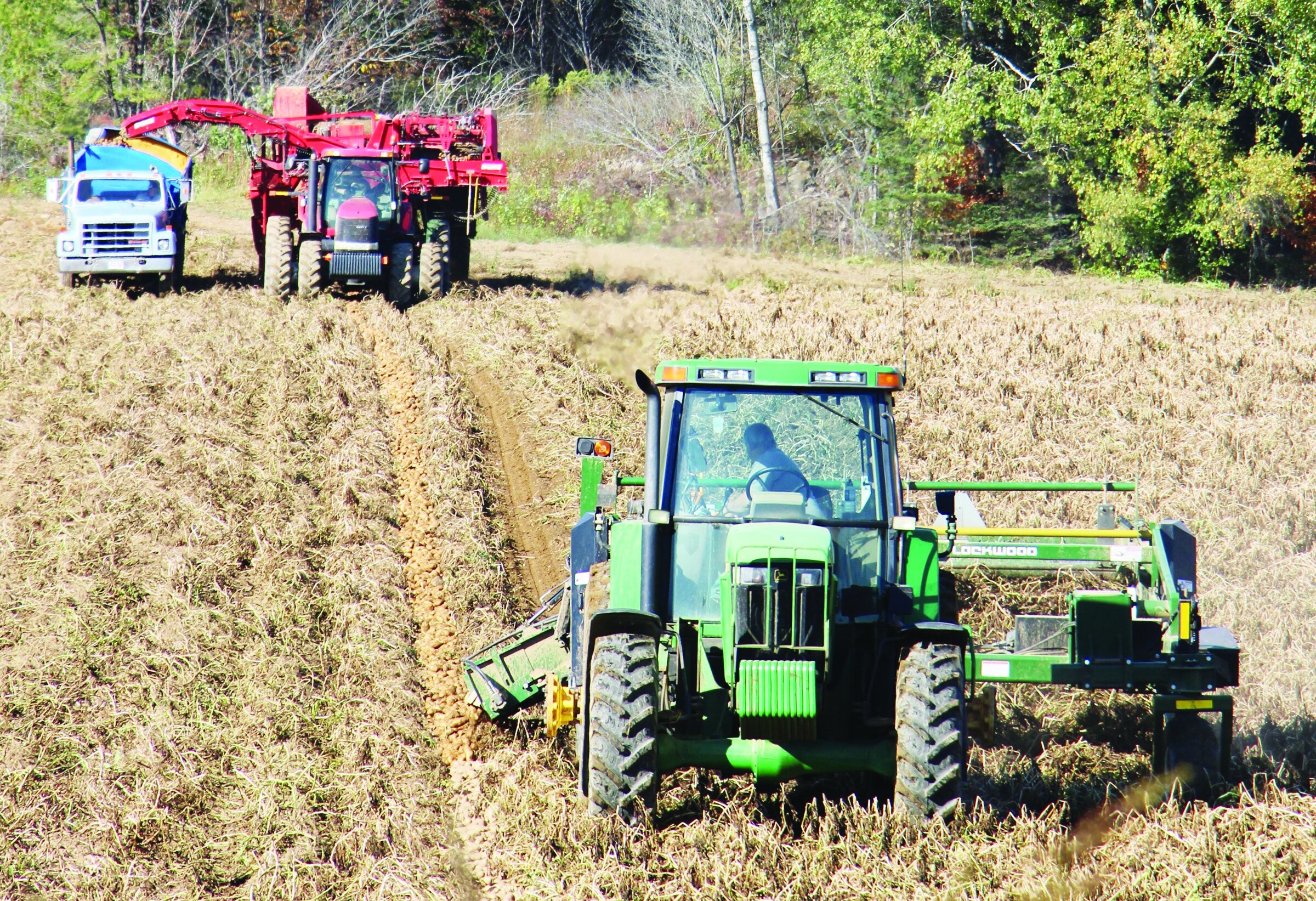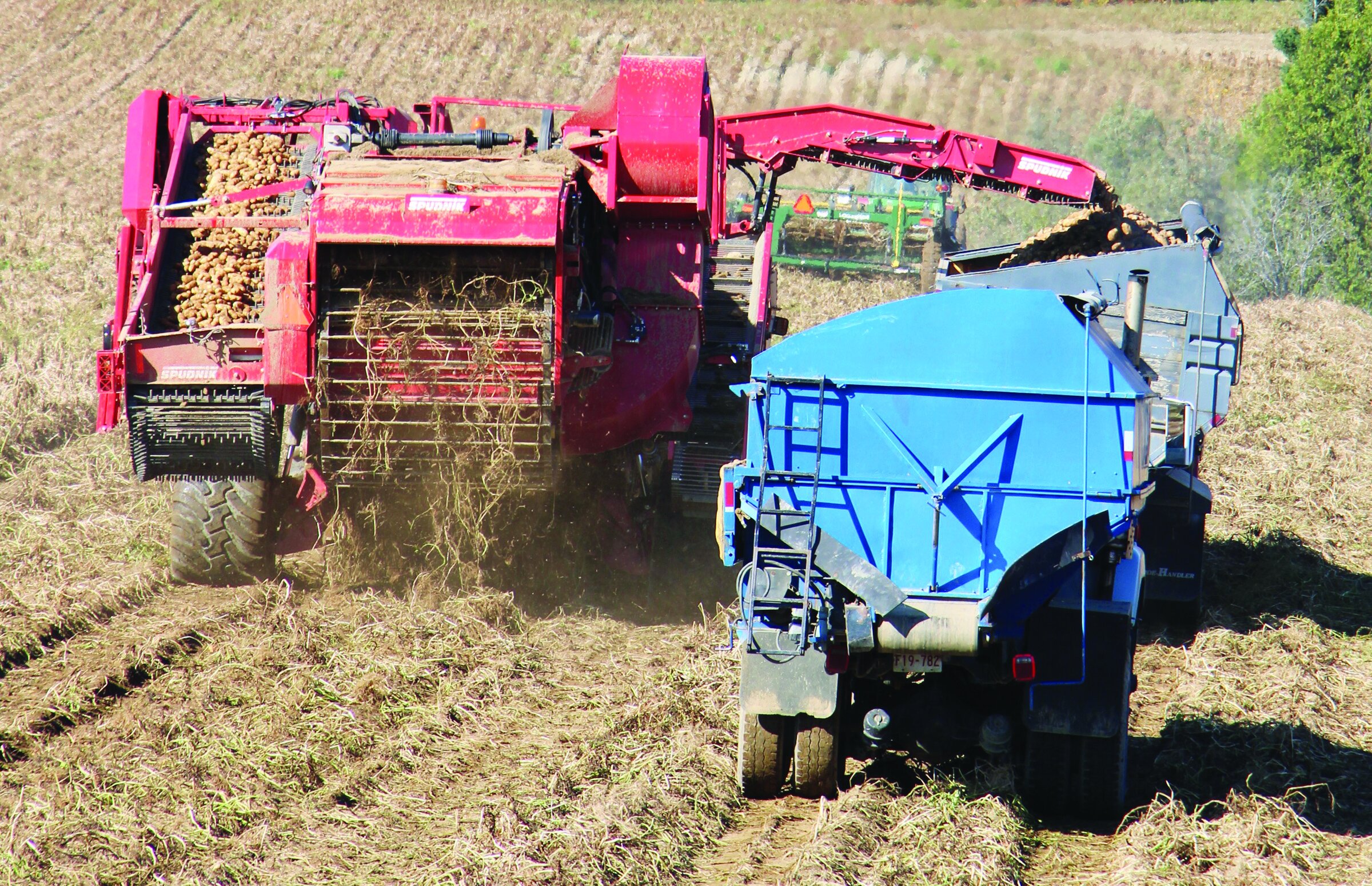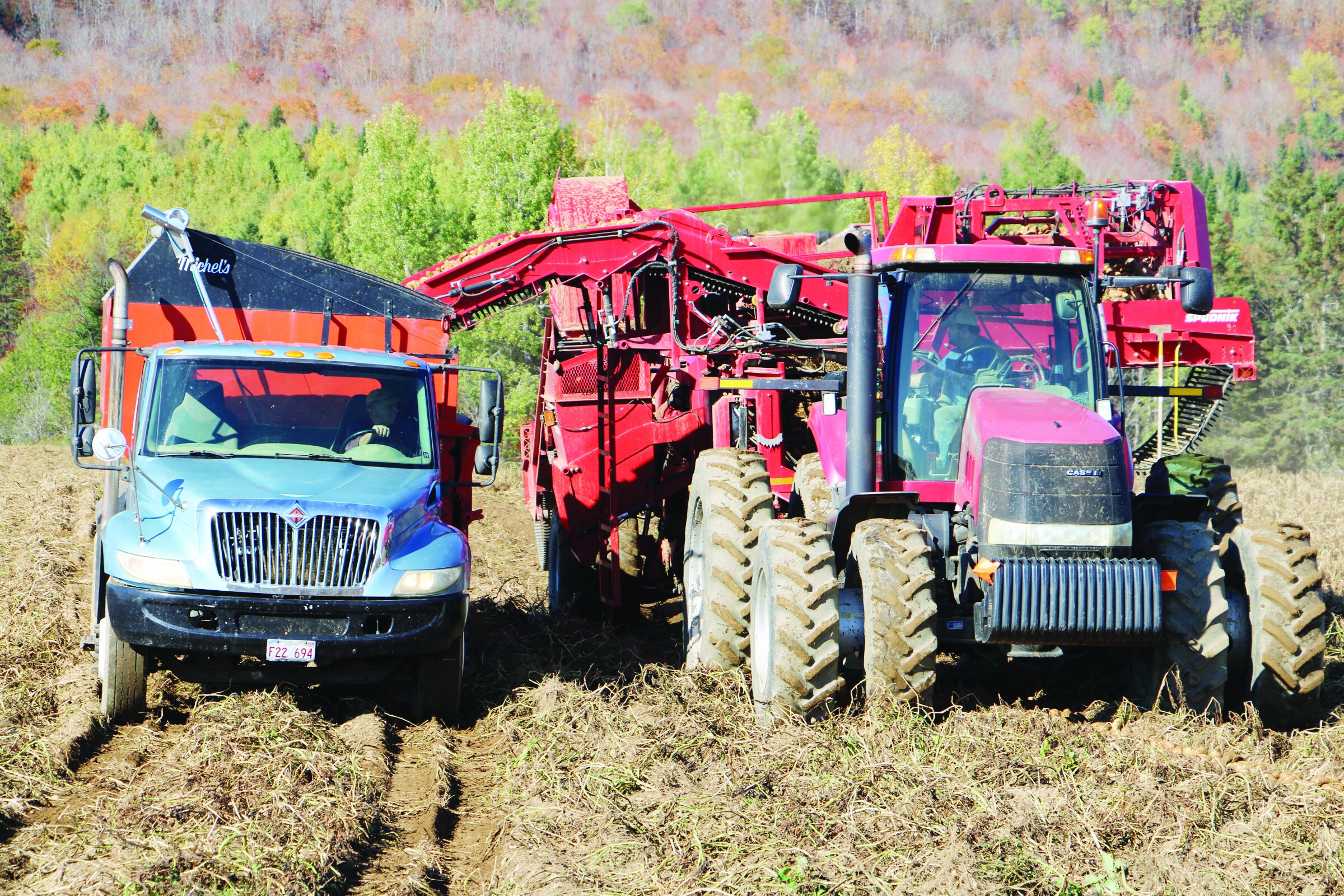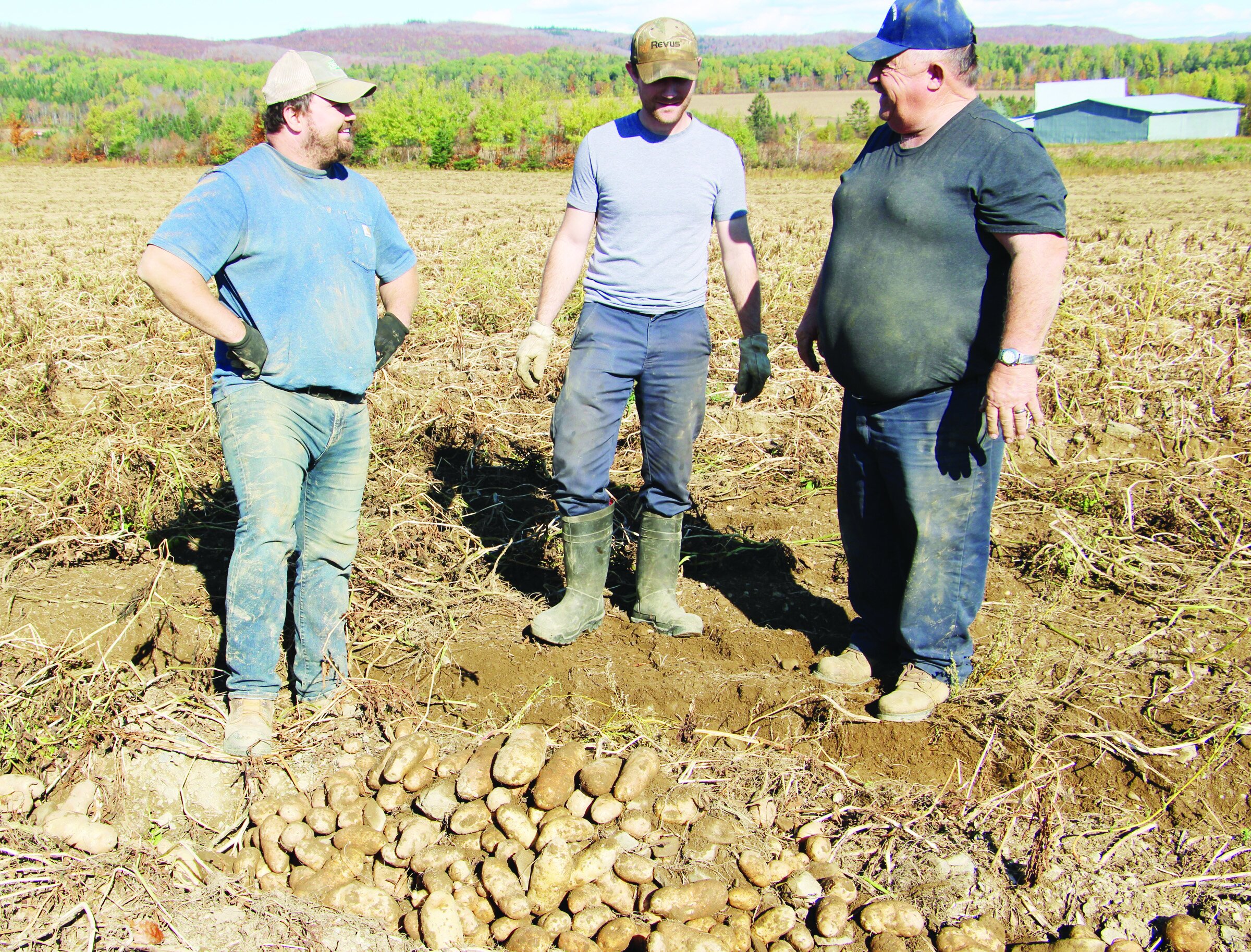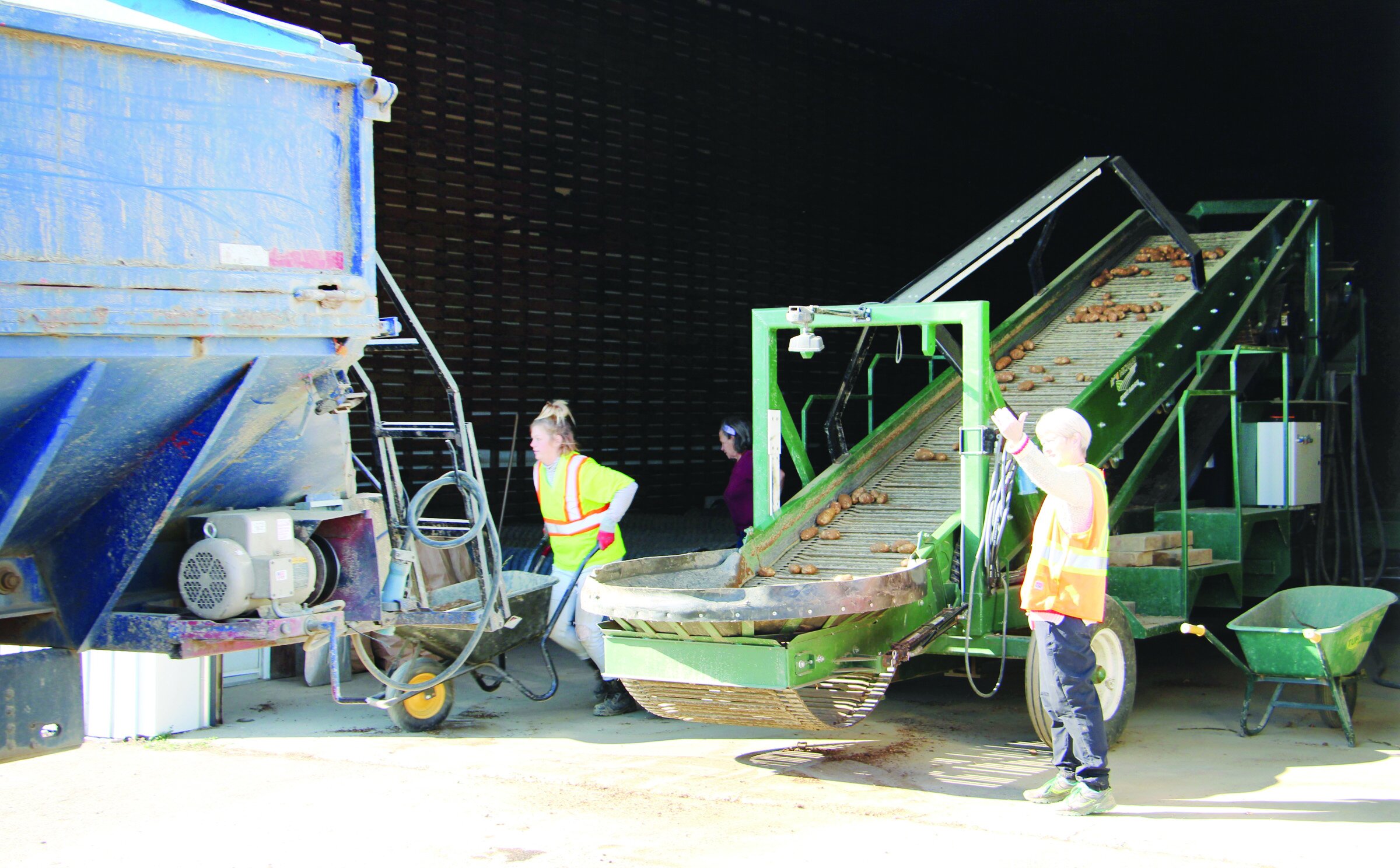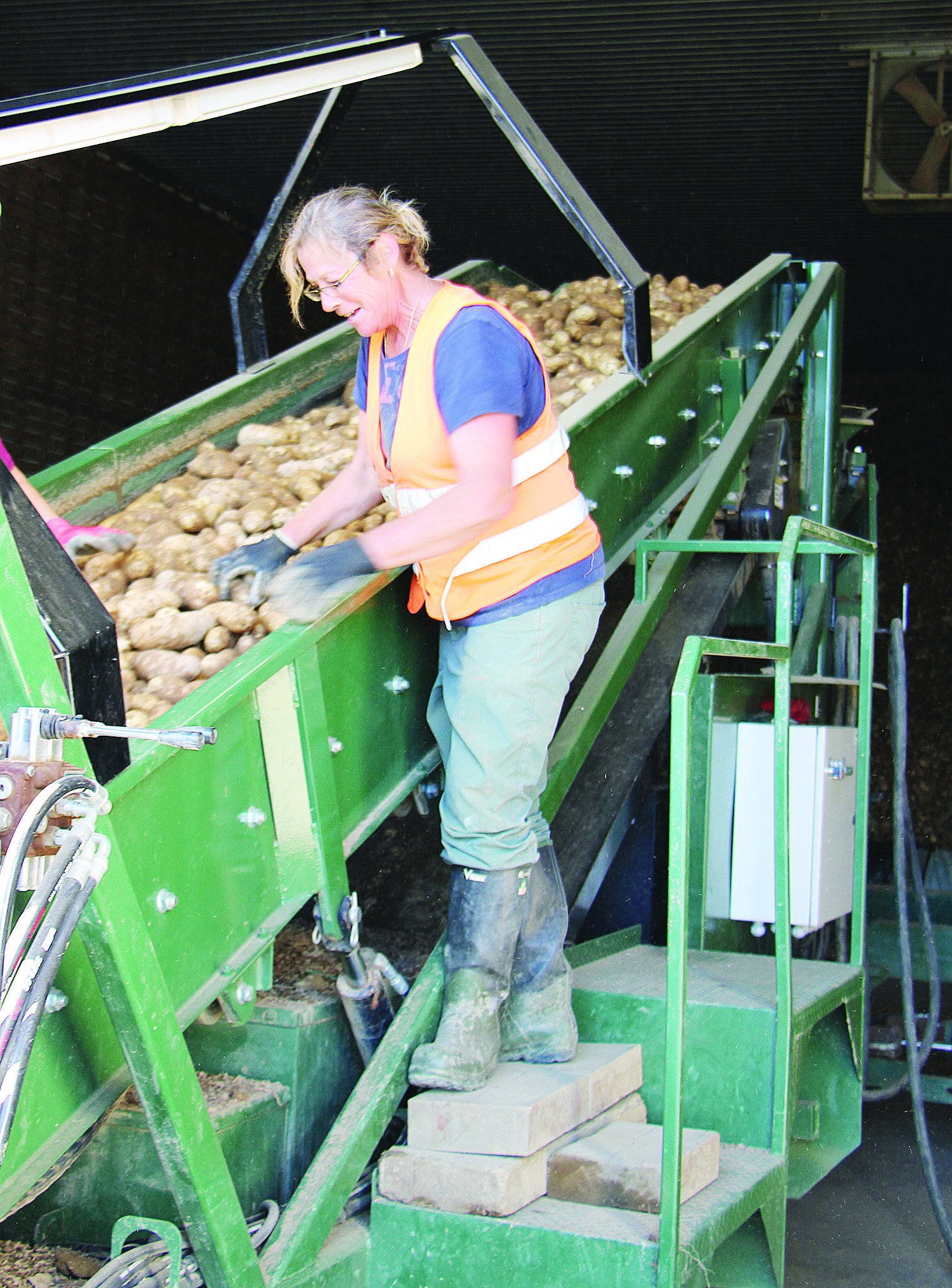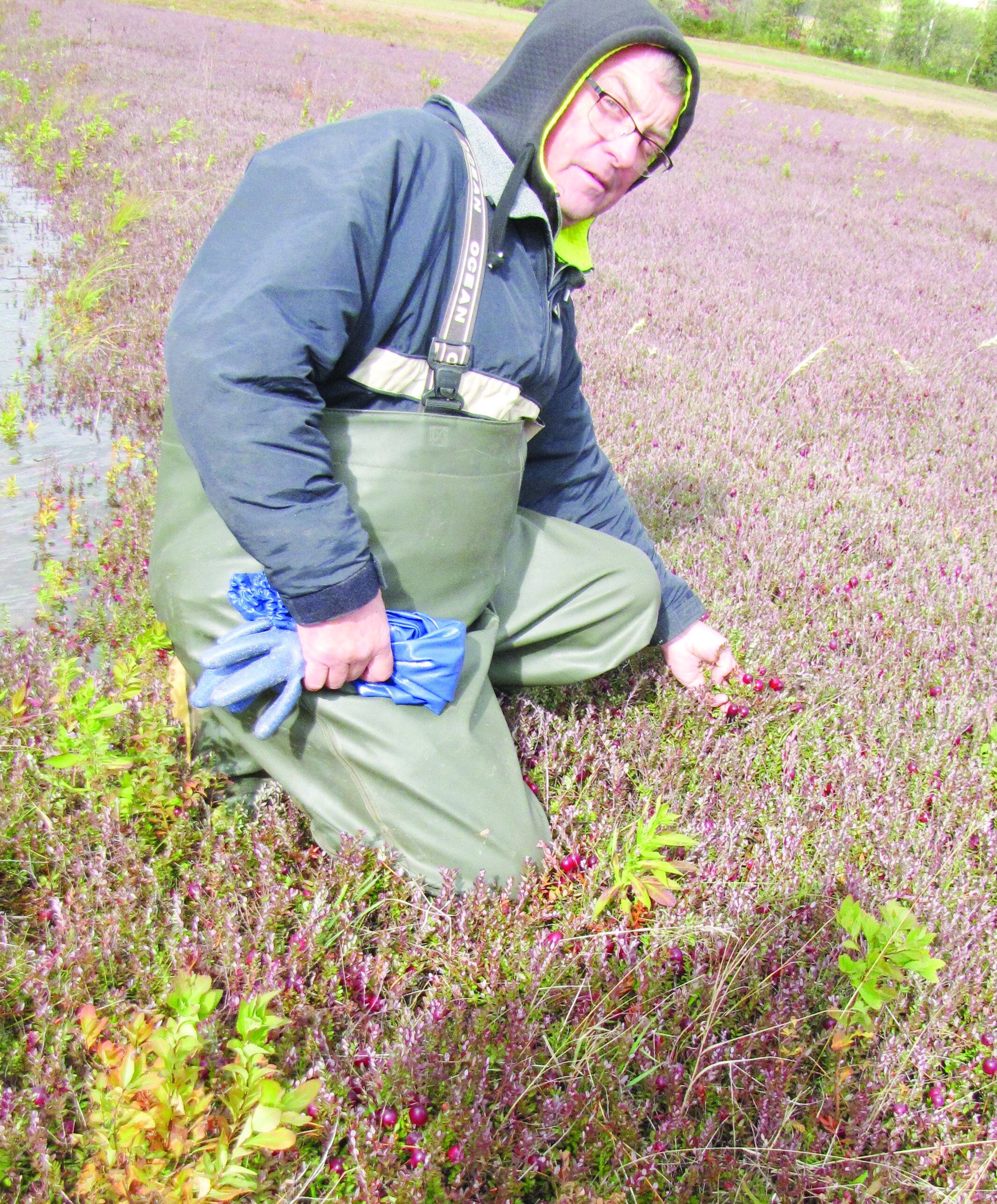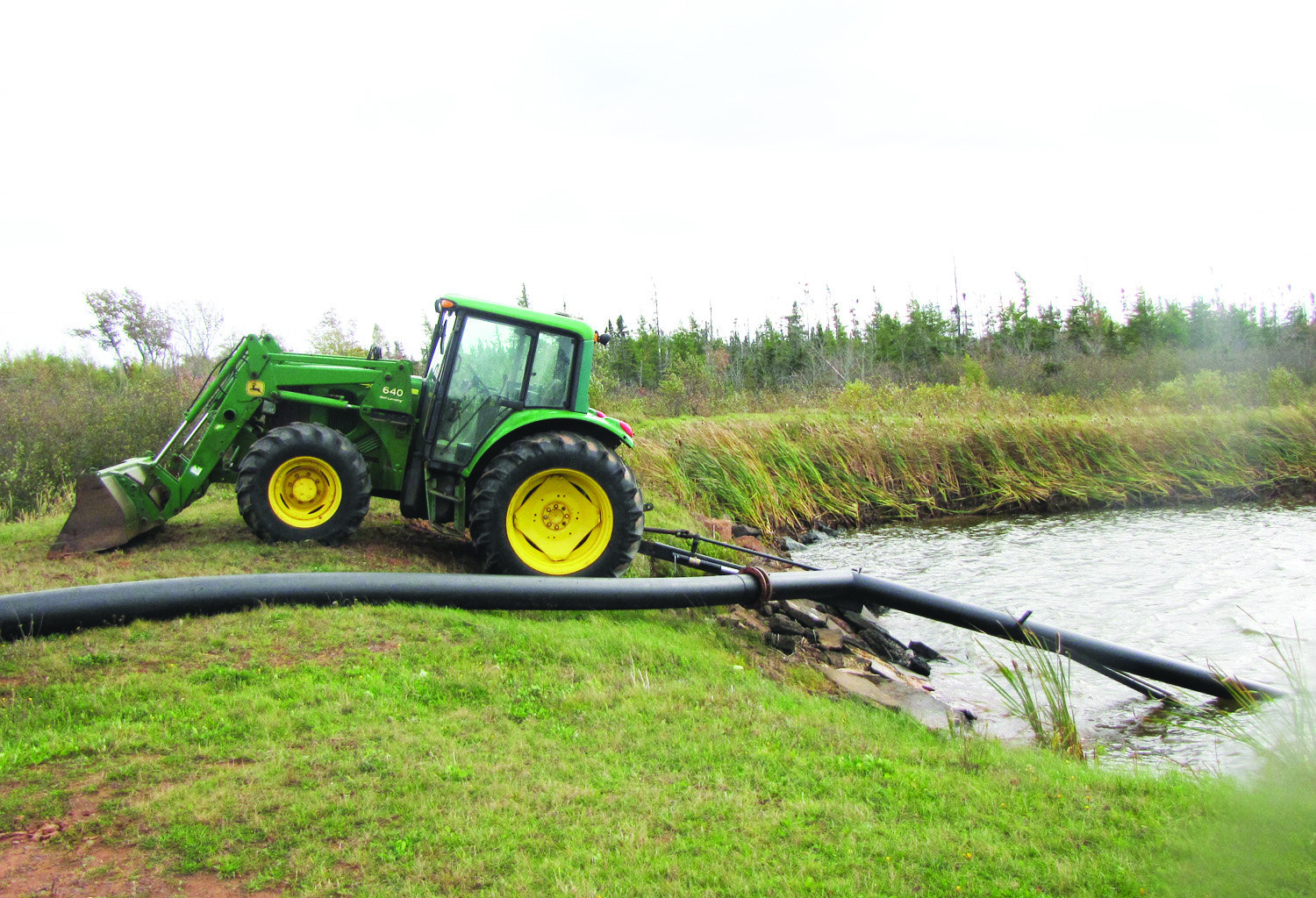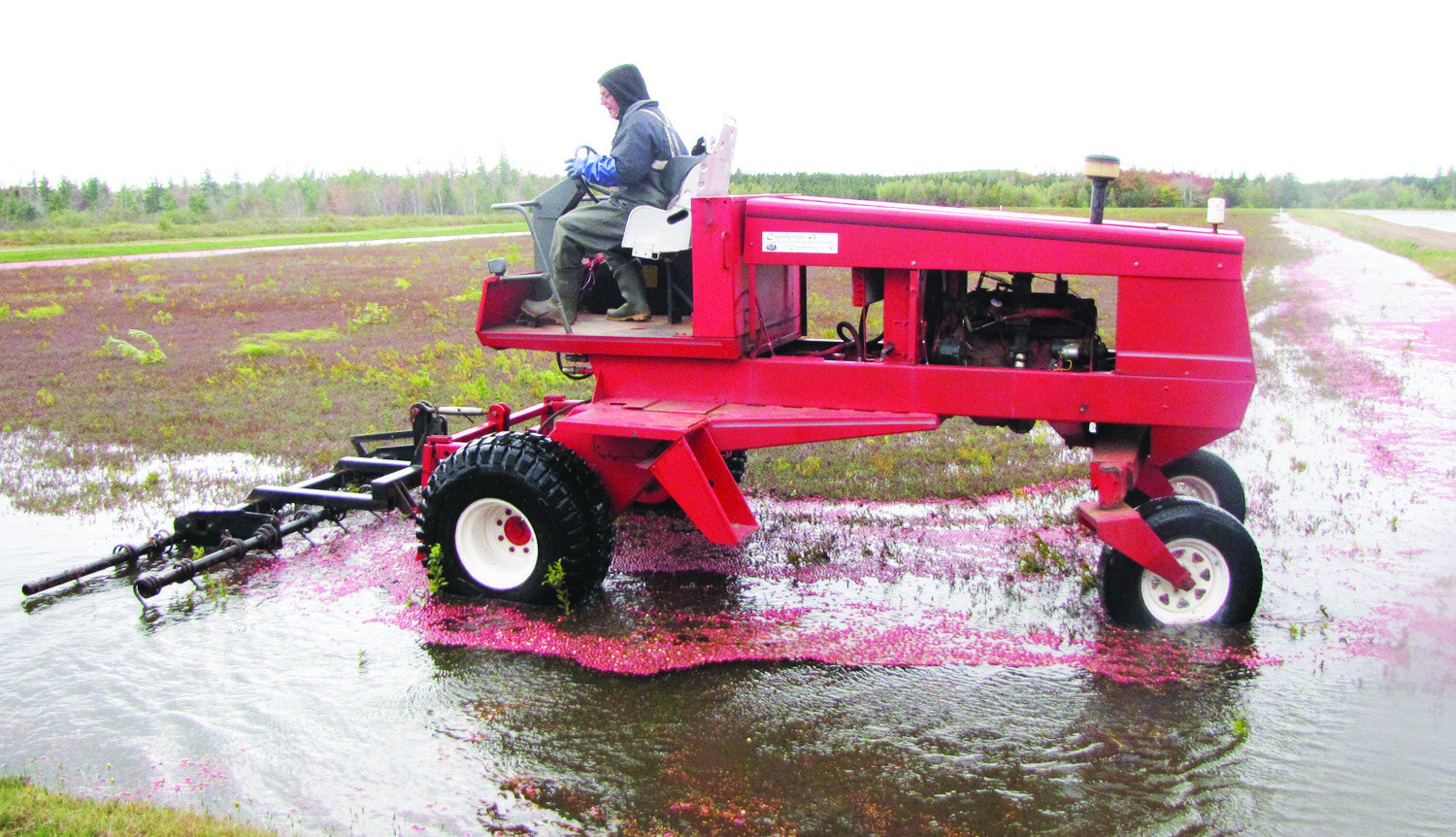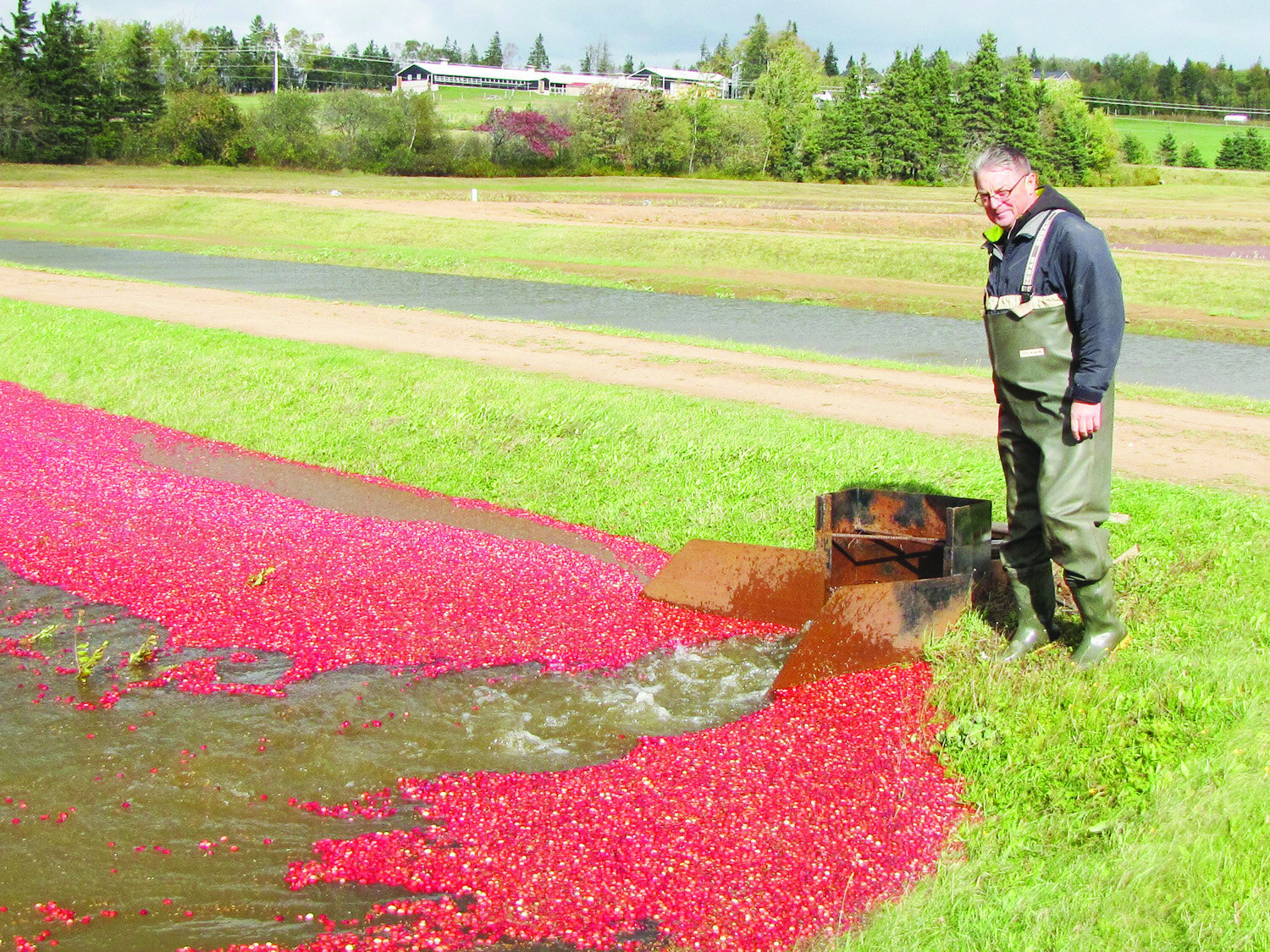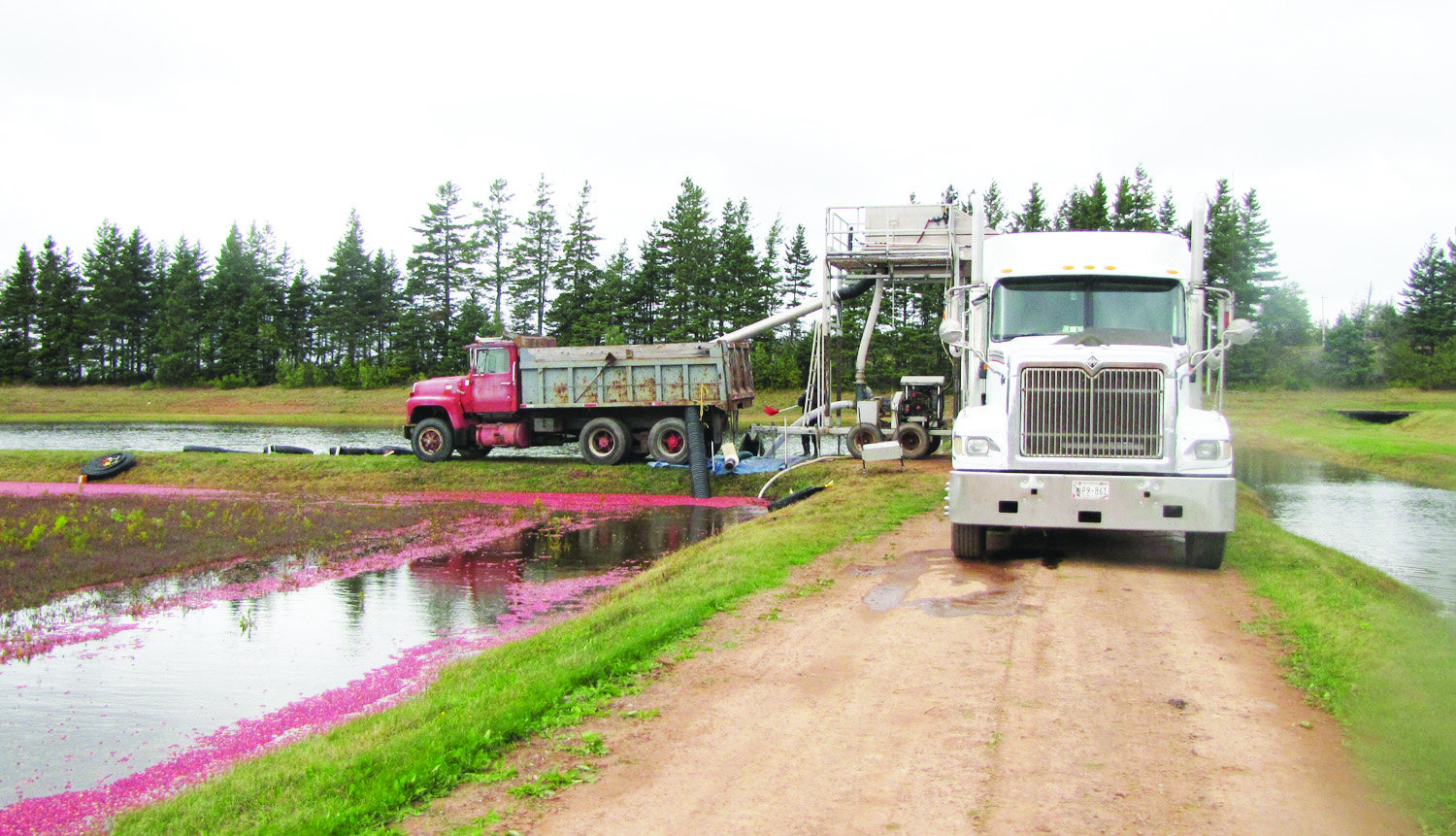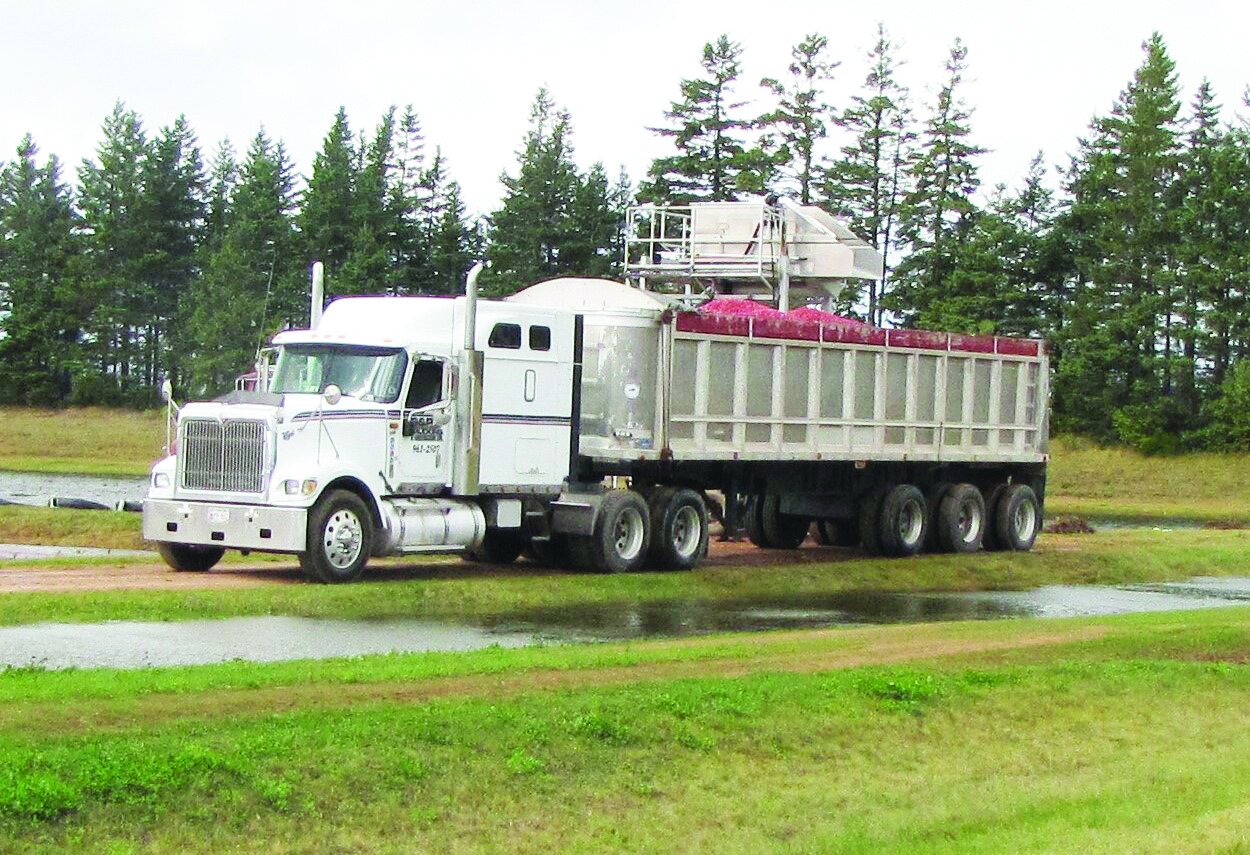Dealing with double whammy of drought and contract cut
/by George Fullerton
New Brunswick potato farmers Brent and Carol Anderson continued the Anderson tradition of getting their crops harvested and safely stored again this fall. Brent is the third generation of Andersons, based in Beechwood, N.B., to carry on the farming tradition.
The farm is on the Cahill Road in central Carleton County and a couple of miles east of the Saint John River.
Brent’s grandparents John and Edith Anderson operated a small 50-acre mixed farm at the location. When John became very ill with arthritis, their sons Dean, Frank, and Gordon were taken out of school to attend to spring planting and general farm operations.
Like many of their generation, there wasn’t much schooling after that. Dean and Frank dedicated themselves to farming, while Gordon sought out other employment.
In 1956, Dean and Frank began contracting potatoes to McCain Foods, delivering to the French fry plant in Florenceville. The two Anderson brothers, with the dedicated support of Dean’s wife Clara, continued to add land and built up the operation, eventually abandoning less profitable aspects of the mixed farm and concentrating more and more on potatoes and other cash crops. In addition to contracting potatoes to McCain, they grew seed potatoes and marketed table potatoes. They also produced peas contracted to McCain, and grew grains in rotation with potatoes.
Through their tenure, the Anderson brothers grew the operation to around 175 acres of potato production annually. The brothers were recognized a number of times by McCain Foods as one of the company’s top-10 producers.
NEW GENERATION
In 1986, Dean and Frank were looking forward to retirement and began the management transition to Dean and Clara’s son Brent and his wife Carol.
Brent and Carol continued with a high standard of management and growth of Anderson Farms Ltd. During the past 30-odd years, the farm has been recognized by McCain Foods 16 times as one of its top-10 producers and twice received the champion grower award.
The current generation of managers has built the farm’s potato production up to around 500 acres annually.
Family values continue to be important in the operation. Brent and Carol employ their son Ryan on a full-time basis and their daughter Cara on a seasonal basis, along with Brent’s brother Stacey, cousins Terry Anderson and Calvin Ruff, cousin-in-law Laurie Crain, as well as Jordan Wade, Trudy Vail, and Ryan Crain.
“We have a very dedicated group of employees and they continue to make a major contribution to our success,” said Brent. “I attribute our good quality record to our attention to a good crop rotation plan. We follow every potato crop with a plow-down year, where we plant a mix of clover and alfalfa. The crop is chopped with a batwing mower and plowed down to add organic matter to the soil and boost biological activity. The alfalfa has a deep and aggressive tap root, which penetrates and breaks up soil compaction and benefits water control in the soils.”
Following plow-down, fields are planted in oats, which are contracted to Quaker Oats for human consumption. Harvested oats are delivered to Eastern Grains in Drummond, N.B., where the crop is cleaned, dried, and stored, and eventually shipped out to Quaker production facilities.
In recent years, more than 90 percent of the Andersons’ potato production has been contracted to McCain Foods, with the balance to table markets. Varieties produced include Russet Burbank, Shepody, and Innovator.
Potato seed is sourced from the New Brunswick government’s Bon Accord Elite Seed Potato Centre as E1 stock, which the Andersons plant as E2 stock the following spring. The harvest is sold as E3 product to McCain Foods.
FALL FERTILIZING
In the autumn, prior to the potato growing year, fields are uniformly grid sampled using two-acre blocks. Fields are then limed and fertilized with a GPS-equipped spreader truck operated by County Lime Ltd. according to the nutrient requirements of specific areas of the fields.
“Springtime is very busy and having fertility for the potato crop already in the ground avoids one of the springtime chores,” said Brent.
As McCain contractors, the Andersons must subscribe to the CanadaGAP (Good Agricultural Practices) Program, which is a food safety audit program. They have a comprehensive audit scheduled every four years and may be subject to a random audit in the intervening years.
The program requires detailed record keeping.
The audits focus a good deal of attention on traceability from seed through the production cycles and delivery to the processing plants. The audits review records of inputs, field rotations, chemical storage, application, and container disposal, and many more production practices.
This year, the Andersons wrapped up their potato harvest during the first week of October. According to Brent, the combination of COVID-19 and this summer’s drought made for a very challenging season.
Because pandemic restrictions shut down a good deal of restaurant businesses, at least temporarily, there was a severe decline in demand for French fries. As a result, McCain Foods announced a 15 percent cut to producers’ traditional contracts for 2020.
Brent said the contract cut had a major impact on their operation but added that this year’s drought hurt them even more.
“The drought was definitely the worst I have seen in my lifetime,” he said. “It has caused us a production reduction of 30 to 40 percent. This will be a very hard year for all producers.”
Despite the production deficit, Brent said that the quality of their potatoes was very good.
The Andersons celebrated the end of harvest with a big turkey dinner for their entire crew – another important tradition!
